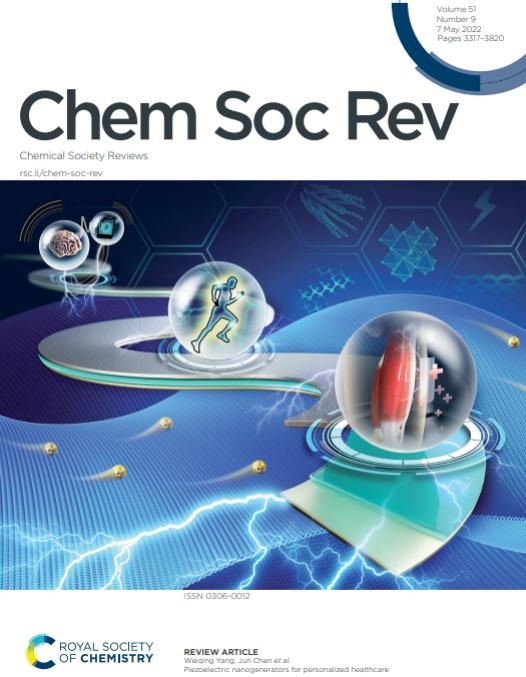Construction and optimization of organic fluorophores in NIR-II fluorescence imaging.
IF 39
1区 化学
Q1 CHEMISTRY, MULTIDISCIPLINARY
引用次数: 0
Abstract
Second near-infrared fluorescence imaging (NIR-II FLI, 1000-1700 nm) has recently emerged as a cutting-edge imaging modality, offering deeper tissue penetration and superior clarity compared to the visible (400-700 nm) and conventional NIR-I FLI (700-900 nm) due to the reduced photon scattering, weaker tissue autofluorescence, and lower self-absorption. However, the short absorption/emission wavelengths, low fluorescence brightness, and poor biocompatibility of fluorophores remain major obstacles for NIR-II FLI. In contrast to their inorganic counterparts, organic fluorophores (OFs), including cyanine dyes, D-A structured conjugated small molecules, and semiconducting polymers, exhibit tunable optical properties and high biocompatibility, thereby enabling NIR-II FLI for imaging anatomic structures, specific markers, and physiological activities. This review comprehensively summarizes recent progress in NIR-II FLI by highlighting an increasingly developing palette of biocompatible OFs with tunable NIR-II emission wavelengths. Various optimization strategies are emphasized to enhance the performance of OFs in terms of absorption and emission wavelengths, fluorescence quantum yields, and biocompatibility. Furthermore, the diverse applications of OFs in vascular imaging, lymphatic imaging, tumor imaging, organ imaging, imaging-guided therapy, and biosensors are summarized and introduced. Finally, current challenges and future prospects for the clinical translation of OFs are discussed.NIR-II荧光成像中有机荧光团的构建与优化。
第二种近红外荧光成像(NIR-II FLI, 1000-1700 nm)最近成为一种前沿成像方式,与可见光(400-700 nm)和传统的NIR-I FLI (700-900 nm)相比,由于光子散射减少,组织自身荧光较弱,自吸收较低,可提供更深的组织穿透和更高的清晰度。然而,荧光团吸收/发射波长短、荧光亮度低、生物相容性差仍然是NIR-II FLI的主要障碍。与无机荧光团相比,有机荧光团(OFs),包括菁菁染料、D-A结构共轭小分子和半导体聚合物,具有可调的光学特性和高生物相容性,从而使NIR-II FLI能够成像解剖结构、特定标记和生理活动。本文全面总结了NIR-II FLI的最新进展,重点介绍了日益发展的具有可调NIR-II发射波长的生物相容性OFs。在吸收和发射波长、荧光量子产率和生物相容性方面,强调了各种优化策略来提高OFs的性能。综述了OFs在血管成像、淋巴成像、肿瘤成像、器官成像、成像引导治疗和生物传感器等方面的应用。最后,对OFs临床翻译面临的挑战和未来前景进行了讨论。
本文章由计算机程序翻译,如有差异,请以英文原文为准。
求助全文
约1分钟内获得全文
求助全文
来源期刊

Chemical Society Reviews
化学-化学综合
CiteScore
80.80
自引率
1.10%
发文量
345
审稿时长
6.0 months
期刊介绍:
Chemical Society Reviews is published by: Royal Society of Chemistry.
Focus: Review articles on topics of current interest in chemistry;
Predecessors: Quarterly Reviews, Chemical Society (1947–1971);
Current title: Since 1971;
Impact factor: 60.615 (2021);
Themed issues: Occasional themed issues on new and emerging areas of research in the chemical sciences
 求助内容:
求助内容: 应助结果提醒方式:
应助结果提醒方式:


